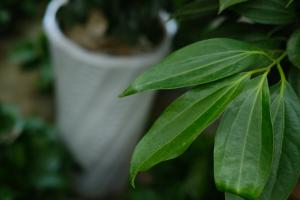Introduction
Lilies are beautiful flowering plants that can add a touch of elegance to any garden or home. With proper care, these plants can bloom for several years. In this article, we will discuss some tips on how to take care of lily plants.
Choosing the Right Spot
The first step in taking care of lily plants is choosing the right spot for them. Lilies prefer a spot that receives partial to full sunlight. It is also essential to ensure that the soil is well-drained as lilies do not tolerate standing water. If you鈥檙e growing lilies indoors, place them near a window with plenty of sunlight.
Watering
Proper watering is essential for the growth and health of lily plants. Lilies require moist soil, but it is crucial not to over-water them as this can lead to root rot. It is recommended to water lilies at least once a week during the growing season. However, ensure that the soil is not saturated as this can cause the roots to rot. In summers, sprinkle some water on the leaves to keep the plant hydrated.
Fertilizing
Lilies require proper nutrition to grow and bloom to their full potential. Fertilize your lily plants once a month during the growing season with a balanced fertilizer containing equal amounts of nitrogen, phosphorus, and potassium. Follow the instructions on the package to ensure that you are not over-fertilizing your lilies, as this can cause damage to the plant.
Pruning
Pruning is an essential part of lily plant care. Once the lily plant stops blooming, trim the stem down to the foliage level. This helps the plant focus its energy on growing strong roots and healthy foliage. Additionally, remove any yellow or dead leaves, as these can attract pests and diseases.
Pest and Disease Control
Despite proper care, lily plants can be prone to pest and disease problems. Common pests that can affect lily plants include aphids, spider mites, and lily beetles. Keep an eye out for any signs of infestation and treat the problem as soon as possible. Additionally, lilies can suffer from fungal diseases such as gray mold or botrytis. Ensure proper air circulation around the plant, and remove any infected leaves immediately to prevent the spread of the disease.
Conclusion
In conclusion, lilies are stunning plants that can bring life to any garden or home. With proper care, these plants can thrive for years. By providing your lilies with the right amount of sunlight, water, fertilizer, and pruning, you can enjoy the beauty of these plants for a long time.

 how many times do yo...
how many times do yo... how many planted tre...
how many planted tre... how many pine trees ...
how many pine trees ... how many pecan trees...
how many pecan trees... how many plants comp...
how many plants comp... how many plants can ...
how many plants can ... how many plants and ...
how many plants and ... how many pepper plan...
how many pepper plan...






























